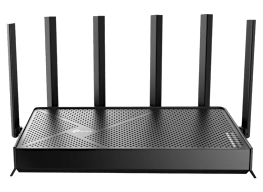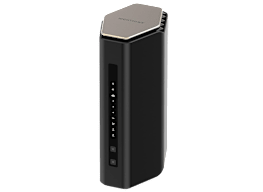Best WiFi Routers of 2025
Say goodbye to WiFi dead zones and hello to an easier setup and stronger security with these routers from Asus, TP-Link, and others
When you shop through retailer links on our site, we may earn affiliate commissions. 100% of the fees we collect are used to support our nonprofit mission. Learn more.
Your WiFi router is the gateway for all the data that streams into and out of your home via your internet service provider.
That includes every 4K holiday movie you watch on Netflix, every last-minute gift you order online, every holiday video call with family, and every online match on that newly unwrapped PlayStation or Steam Deck.
Best Mesh Routers
Mesh routers are generally more expensive than single-unit routers, but they do a better job of spreading WiFi throughout a home, helping to reduce dead zones and connection drops.
Best Single-Unit Routers
You can usually find a single-unit router on sale for less than a mesh router setup, and that may be all you need for reliable WiFi, especially if you live in a modest home.
Best Budget Mesh and Single-Unit Routers
Upgrading your home network doesn’t have to break the bank. These routers offer the best bang for your buck, delivering strong performance and essential features at a surprisingly low price.
How CR Tests WiFi Routers
Every model in our ratings is tested by the expert technicians in our labs just north of New York City, where we simulate a typical home environment, measuring the throughput (which can be thought of as the router’s “speed”) at three distances: 8 feet, 20 feet, and 55 feet.
We take into account how easy the router is to set up and manage (which nowadays is often done with a smartphone app); whether it has useful features like built-in Ethernet and USB ports, and parental controls; and the quality of service, a technology that helps prevent your video calls for work from being interrupted by other traffic on the network.
We also evaluate the router’s data privacy policies and whether the model automatically updates with the latest firmware, which can help keep you and your data safe.
WiFi Standards, Explained
As laptops, phones, and other internet-connected devices proliferate in our homes, the WiFi standards employed by routers are routinely upgraded to make sure the devices keep pace with the traffic. Here’s a look at what the current options have to offer.
WiFi 6: Introduced in 2019, this standard improved transfer speeds and reduced latency.
WiFi 6E: Introduced in 2020, this standard greatly improved speeds in dense locations like apartment buildings by opening up a new part of the wireless spectrum known as the 6GHz band to WiFi devices.
WiFi 7: Introduced in 2024, this standard further improved data transfer speeds and latency by enabling devices to send data across multiple bands (2.4GHz, 5GHz, and 6GHz) at the same time.
You may sometimes see these standards referred to by their more technical names: WiFi 6 as 802.11ax, WiFi 6E as 802.11axe, and WiFi 7 as 802.11be. We use both naming conventions in our ratings.
Keep in mind that to take full advantage of a WiFi 7 router, you need to own devices that support WiFi 7, too. Right now, only a handful of newer smartphones, laptops, and smart-home gadgets are compatible with the standard. If your devices are designed for WiFi 6, you probably won’t see a major performance boost from upgrading your router alone.
That said, if you’re planning to replace your tech in the near future—or you simply want to future-proof your home network—a WiFi 7 router could be a smart investment. Just be prepared to pay a premium for the cutting-edge features.

































